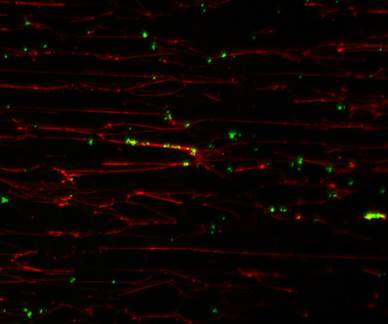Host-pathogen interactions

Nosocomial pathogens such as Candida albicans, Clostridioides difficile, Enterococcus spp, Escherichia coli, Pseudomonas aeruginosa, and Staphylococcus aureus are common in our environment or might even be a part of our ‘normal’ physiological flora. These bacteria/fungi are usually well tolerated by our body without creating an inflammatory response, if certain areas are colonized, but they may turn into life-threatening pathogens when allowed to enter into different parts of our body or if our immune system is compromised. Many of them are able to adhere to and to form biofilms (i.e. multilayered structures of microbial cells embedded into an extracellular matrix) on implanted medical devices such as artificial joints, central or peripheral venous catheters, and dental implants. Such biofilms are of particular concern, as cells released by these biofilms may serve as starting point for other infections such as bacteremia. Of the nearly 2 million healthcare-associated infections reported by the Centers for Disease Control (CDC) per year for the United States since the beginning of the 21st century, more than 50% can be attributed to indwelling medical devices1. It is thus of utmost importance to understand how these microbial pathogens interact with implanted medical devices in the human setting, and how they manage to subvert our immune system. Research at IMMH is trying to address both topics by studying regulatory systems affecting infectivity and immune evasion in mammal hosts, and by investigating the initial adhesion events between pathogenic microorganisms and biotic/abiotic surfaces by Atomic Force Microscopy-based Single Cell Force Spectroscopy.
1VanEpps, J.S. and Younger, J.G. (2016) Implantable Device-Related Infection. Shock 46:597-608. DOI: 10.1097/shk.0000000000000692
